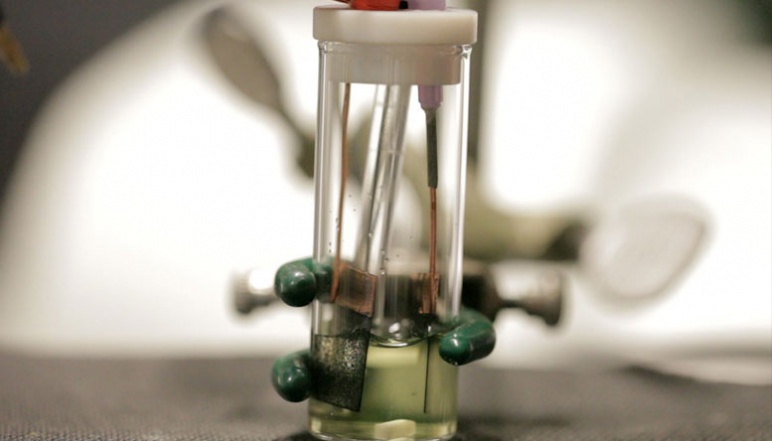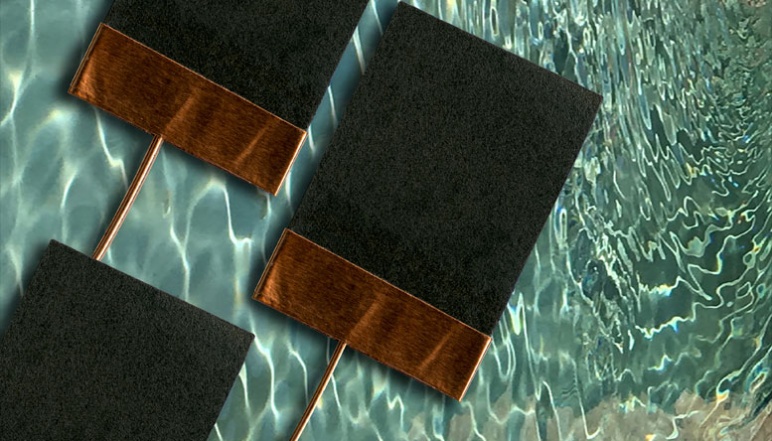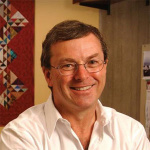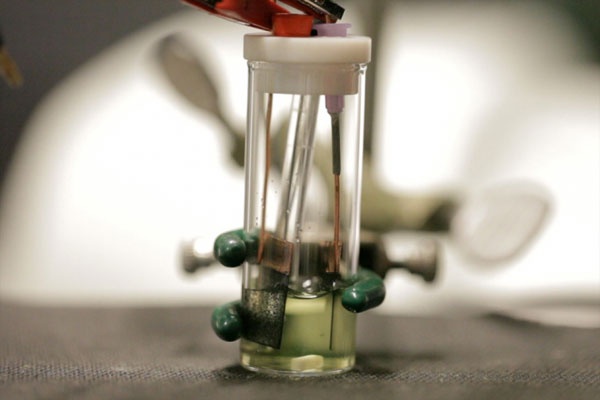Our Research Electrochemically-modulated separation processes for the treatment of contaminated water sources

Photo credit: Hatton research team
A team of MIT researchers has developed a new way to clear pollutants from water, even when present in extremely low concentrations. Video: Melanie Gonick/MIT Electrode images: Felice Frankel

Photo credit: Hatton research team
Principal Investigator
T. Alan Hatton
- Ralph Landau Professor
- David H. Koch School of Chemical Engineering Practice Director
- Department of Chemical Engineering
T. Alan Hatton is the Ralph Landau Professor in the Department of Chemical Engineering. Professor Hatton's research interests include transport phenomena and separation processes, among others. Professor Hatton is the recipient of a 2015 J-WAFS seed grant for his project, "Electrochemically-modulated Separation Processes for the Treatment of Contaminated Water Sources," and a J-WAFS Solutions project, "Electrochemically-mediated Adsorptive Processes for Water-remediation."
Challenge:
Can we selectively remove contaminants from water at low concentrations? Can we scale this process to large water treatment facilities?
Research Strategy
- Targeted and removed organic contaminants and heavy metals without chemical additives or energy-intensive high pressure or temperature variance processes
- Engineered a cost effective, selective removal process using voltage-controlled electrochemical potential
- Scaled device for home and industrial use
Project description
This project worked to develop and implement a conceptually new strategy for wastewater treatment that relies on electrochemically-modulated separation (EMS) processes. These processes exploit redox-tunable molecular-level affinities of adsorbent materials towards target contaminants and require no additional chemical additives, only a mild source of electrical power. The processes can be operated over a wide range of scales from simple hand-held devices to high-volume treatment facilities without need for high pressure operations.
The design principles for the electrode systems established in this work focused on ensuring the ease and cost of fabrication of the electrodes themselves, as well as their assembly into practical devices for use both in individual households, and in more centralized facilities, e.g., for entire villages. Important factors that were considered include: cyclic operational modes, energetics of the process, device fabrication, sources of electrical power, choice of stripping stream solutions, cycling stability, operation at different scales, etc.
Outcomes
- Developed redox-electrodes and cation-selective adsorbents to remove contaminants from water, such as pesticides, herbicides, and heavy metals
- Created a high-performance ion-selective electrochemical system for purifying water using asymmetric electrochemical cells
- Developed energy efficient electroreduction method to target nitrosamines in waste water
- Designed protocol to evaluate efficiency of separation for different types of water contaminants using bench-scale batch and flow systems
Publications
Electrosorption at functional interfaces: from molecular-level interactions to electrochemical design
Xiao Su and T. Alan Hatton, Physical Chemistry Chemical Physics, 2017
Redox-electrodes for selective electrochemical separations
Xiao Su, T. Alan Hatton, Advances in Colloid and Interface Science, 2017
Asymmetric Faradaic systems for selective electrochemical separations
Xiao Su, Kai-Jher Tan, Johannes Elbert, Christian Ruttiger, Markus Gallei, Timothy F. Jamison & T. Alan Hatton, Energy & Environmental Science, 2017
Electrochemically mediated reduction of nitrosamines by hemin-functionalized redox electrodes
Xiao Su, Lev Bromberg, Kai-Jher Tan, Timothy F. Jamison, Lokesh P. Padhye, T. Alan Hatton, Environmental Science & Technology Letters, 2017
Selective molecularly mediated pseudocapacitive separation of ionic species in solution
Demetra S. Achilleos and T. Alan Hatton, ACS Applied Materials & Interfaces, 2016
Anion-selective redox-electrodes: electrochemically-mediated separation with heterogeneous organometallic interfaces
Xiao Su, Heather J. Kulik, Timothy F. Jamison, T. Alan Hatton, Advanced Functional Materials, 2016
News
Additional Details
Impact Areas
- Water
Research Themes
- Water Purification & Desalination
- Technology & Commercialization
Year Funded
- 2015
Grant Type
- Seed Grant
Status
- Completed


